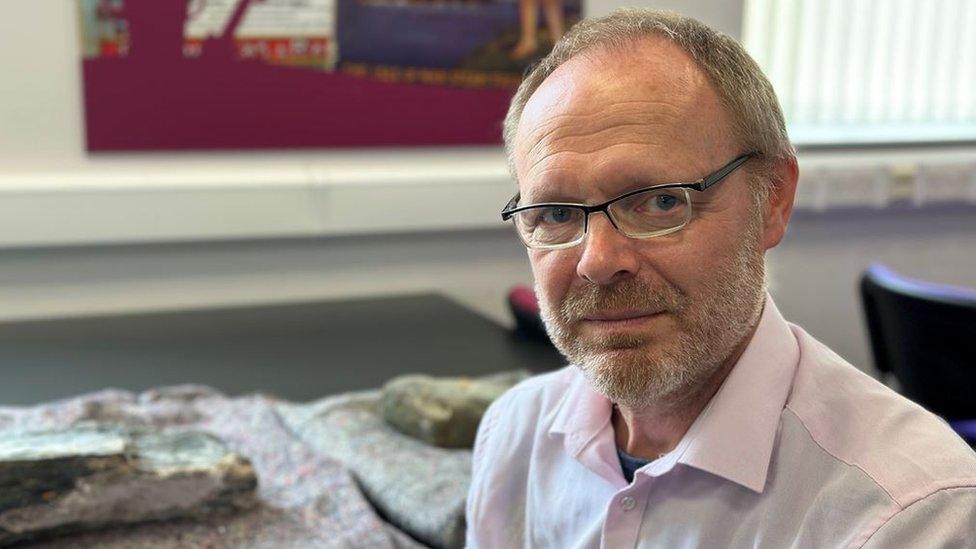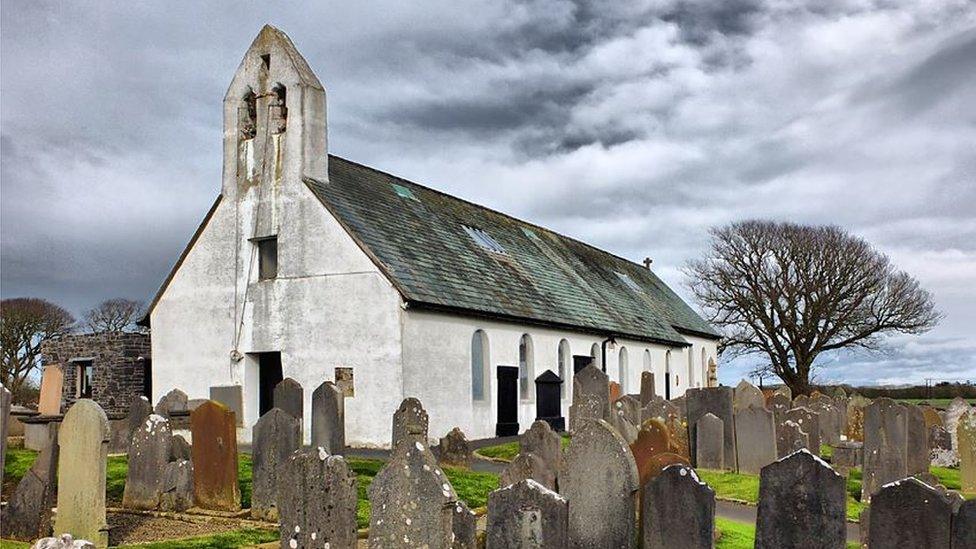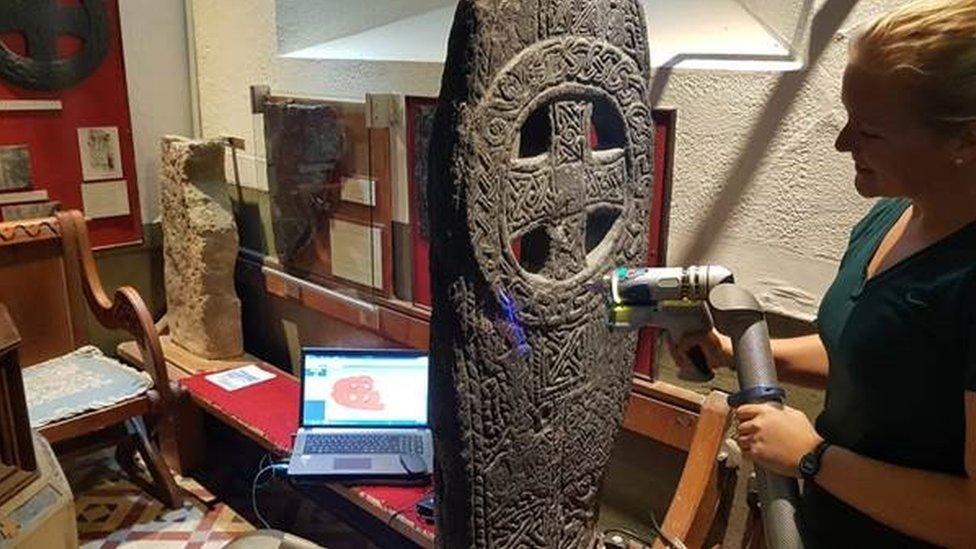Viking era Manx stone crosses discovered in collapsed church wall
- Published

It is thought the larger stone was part of a bigger memorial for a wealthy person
Two Viking era stone crosses discovered in a Jurby churchyard are "unique" on the island, a heritage body has said.
The carved stones, which date back about 1,000 years, were revealed when a storm knocked down part of the wall at St. Patrick's Church in early 2022.
Andy Johnson from Manx National Heritage (MNH) said the intricate design on one cross was "very special" as it had "never been seen before".
The stones are currently at the Manx Museum ahead of their return to Jurby.

Jurby Church Warden Sandra Kerrison spotted designs on the stones in the collapsed wall
Manx stone crosses are thought to be one of the greatest legacies of early Christian faith and Viking settlement on the Isle of Man.
But recognition of their significance diminished over time and the stones, which had featured in a church built around 1699, were used to make up part of the wall after a new church was built in around 1820.
When church warden Sandra Kerrison had been alerted to the collapsed wall last year, she said noticed a piece of slate which looked "a little bit interesting" and contacted the Manx Museum.
However, she said she was "totally shocked" when Mr Johnson, who is curator of field archaeology for MNH, confirmed there were two stone crosses among the rubble.
Two Manx stone crosses were found in Jurby after a storm knocked down part of the churchyard wall

The smaller Manx stone cross discovered is thought to be a grave marker
As legal guardians of the crosses, MNH took the artefacts to the Manx Museum to be recorded and for any conservation work that may be needed.
Mr Johnson said, while the collection of crosses recorded by the heritage body had increased by about 30 since the 1980s to about 210, finding the larger stone with a "substantial piece of sculpted design on is a bit rarer" and "very exciting".
The stone had been preserved by "lucky accident" as it had not been exposed the weather for centuries, meaning the carvings were "fresh" and therefore would help to understand the sculptural styles and techniques of the time, he said.

Andy Johnson from MNH said the discovery was 'very exciting'
It was also "very special" because one part of the design, which sees the use of concave curves instead of convex curves, had never been seen on any other Manx stone crosses, Mr Johnson said.
Preparations were now being made to return them to the Jurby church and an exhibition documenting the discovery of the stones will be on display there until 17 August.

Why not follow BBC Isle of Man on Facebook, external and Twitter, external? You can also send story ideas to IsleofMan@bbc.co.uk, external
Related topics
- Published1 November 2019

- Published14 May 2019

- Published23 August 2018
